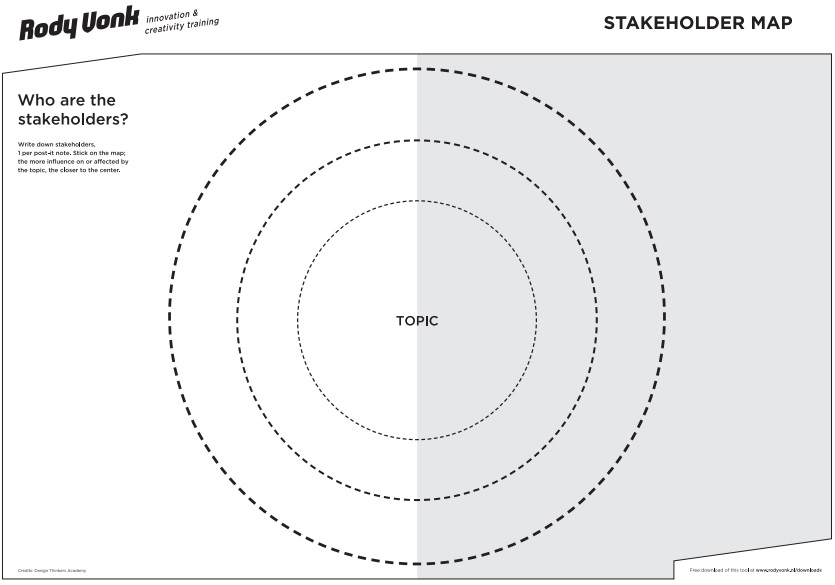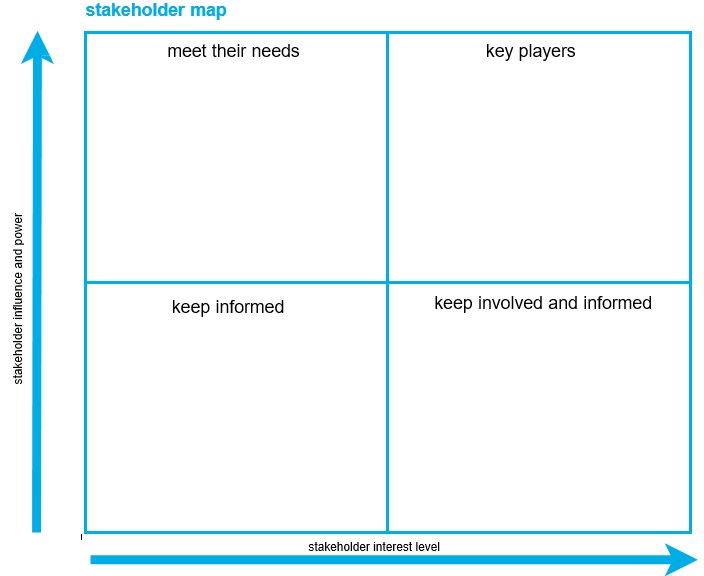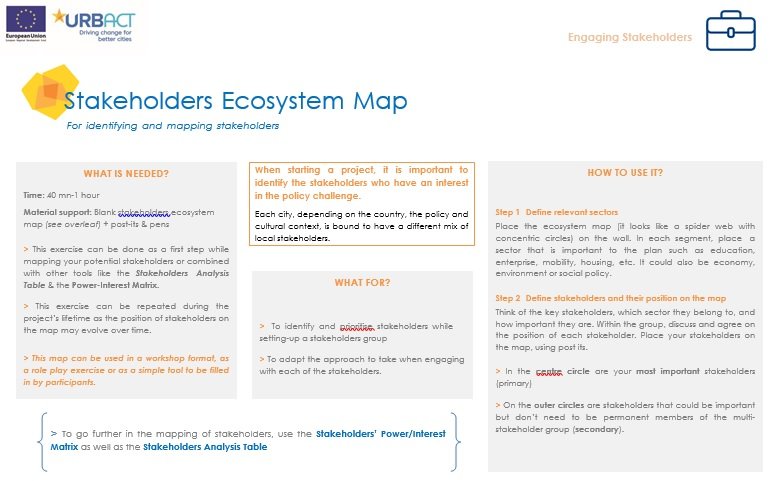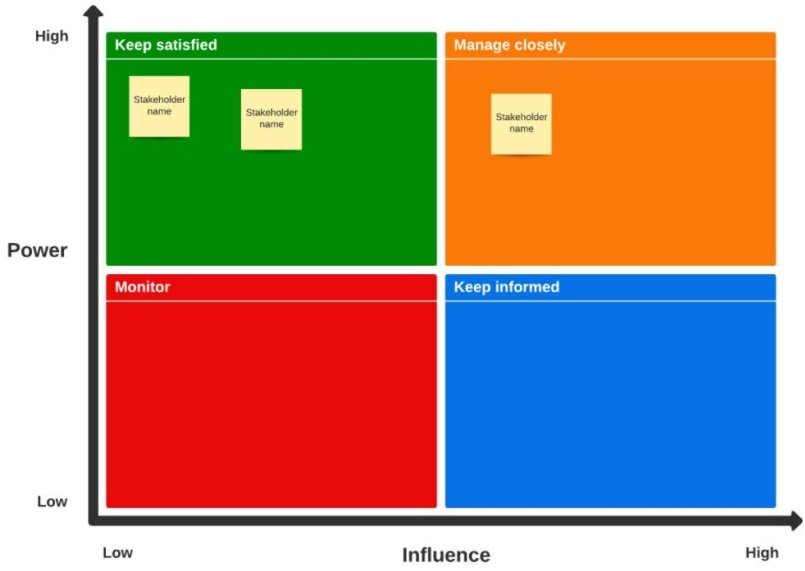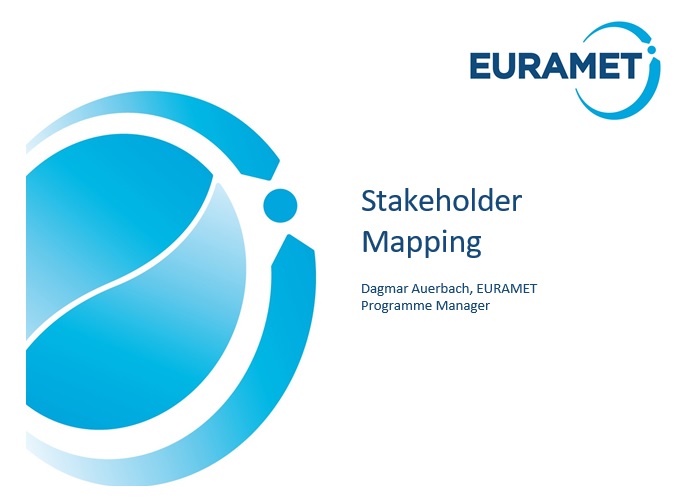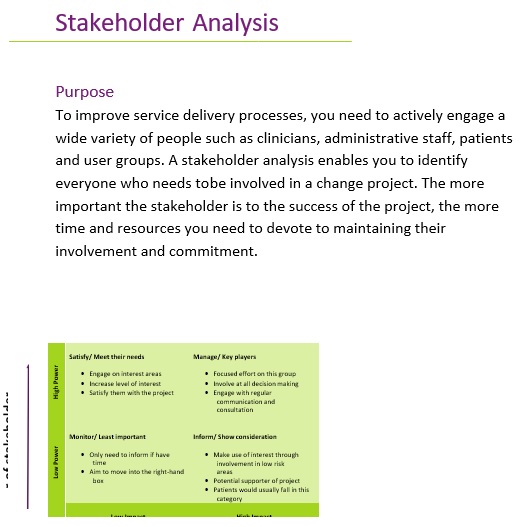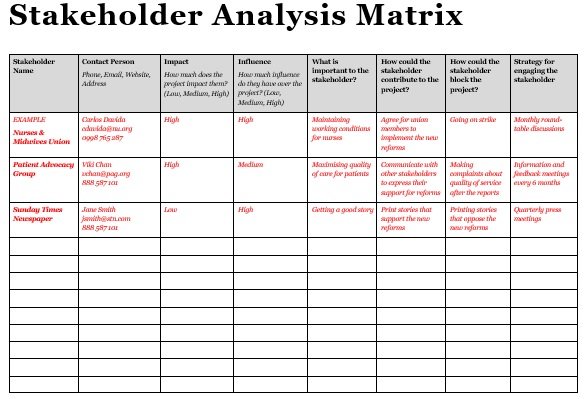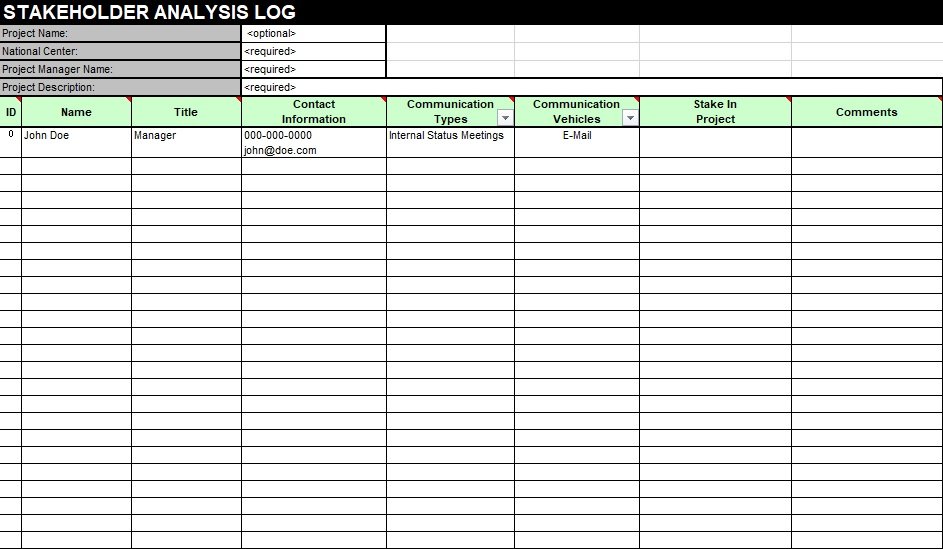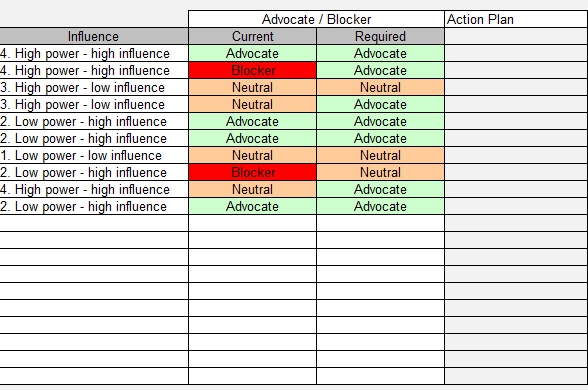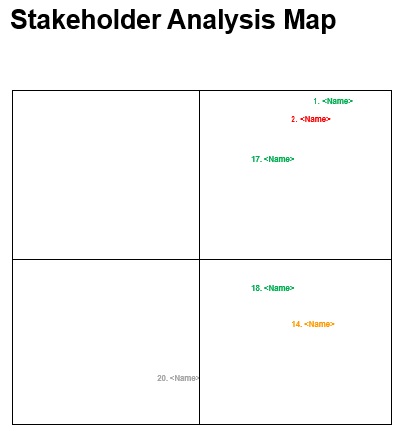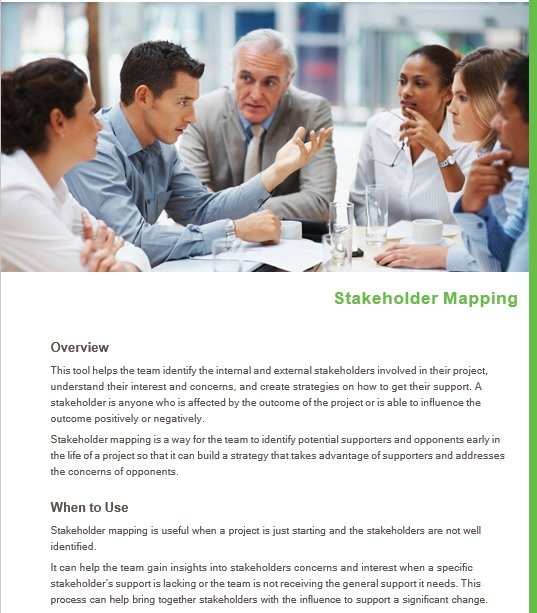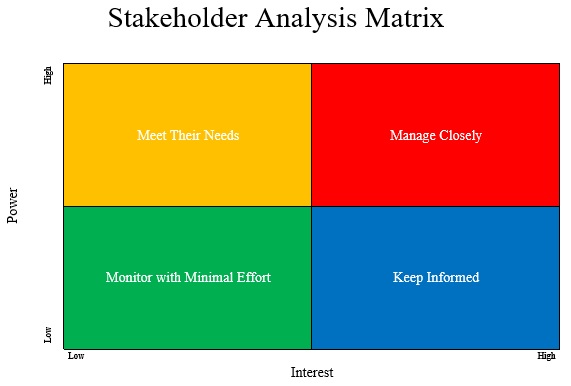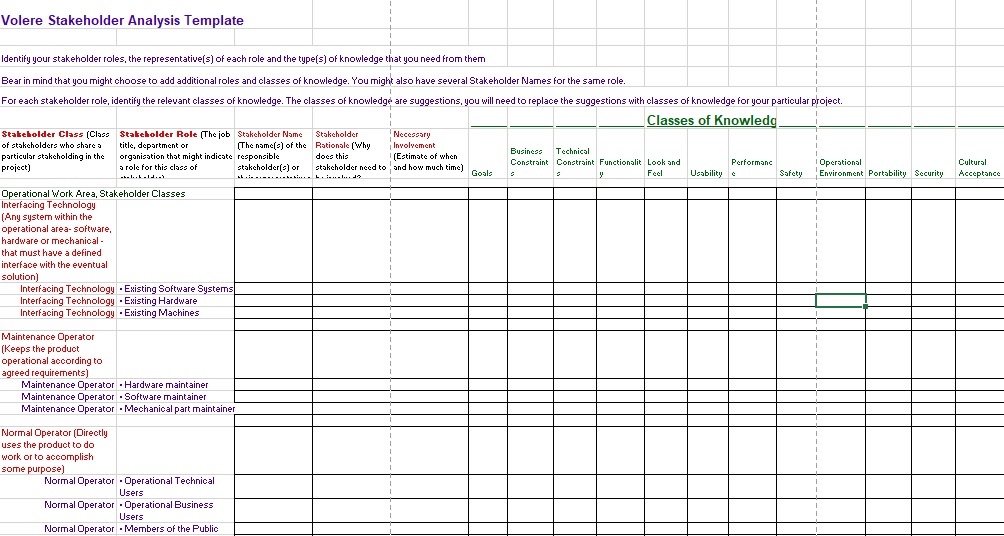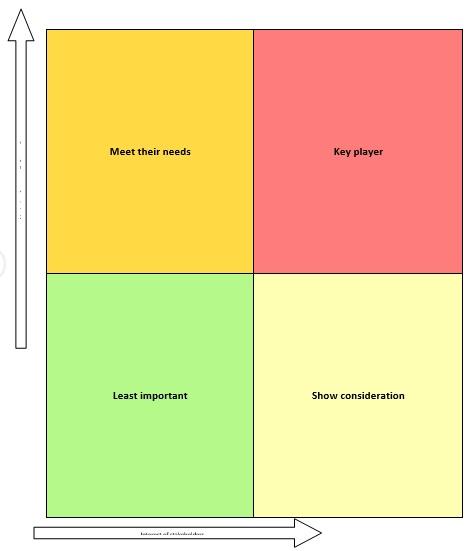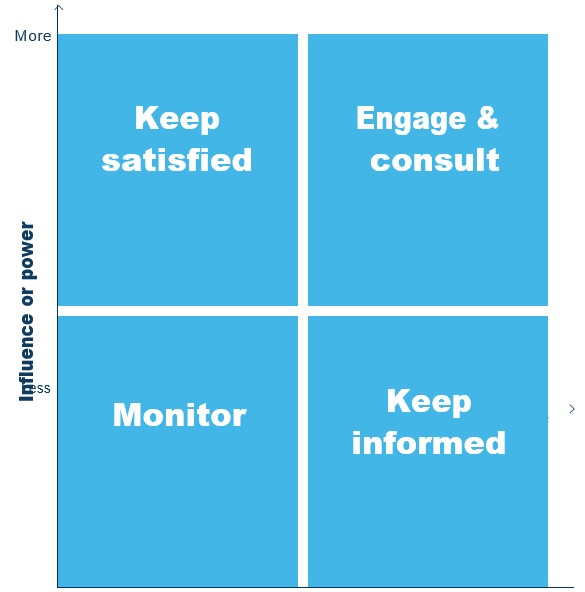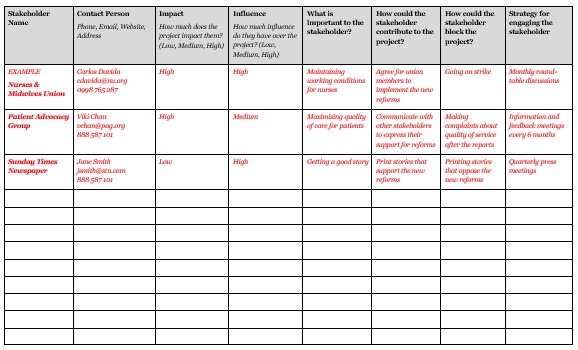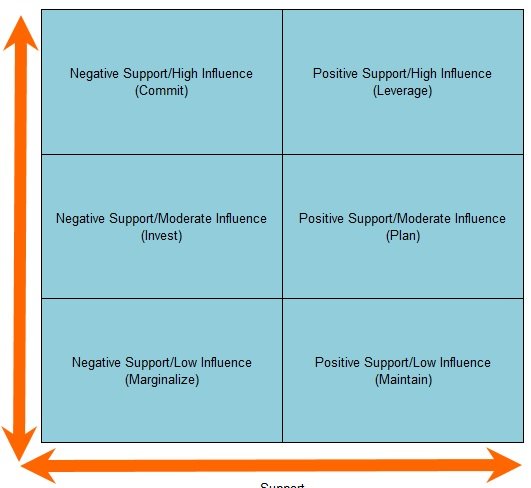A stakeholder map template is an important tool used to make some essential factors for establishing the success of a project. These essential factors are stakeholder management and stakeholder engagement. You should create a stakeholder map after determining all of the project stakeholders to group them according to their varying engagement levels.
Table of Contents
- 1 What are stakeholders?
- 2 Different types of stakeholders:
- 3 What is stakeholder mapping?
- 4 Why is stakeholder mapping important?
- 5 Who can use a stakeholder map template?
- 6 How to create a stakeholder map?
- 7 How to map the relationships among stakeholders?
- 8 Pros of using an Excel stakeholder map template:
- 9 Cons of using an Excel stakeholder map template:
- 10 Conclusion:
- 11 Faqs (Frequently Asked Questions)
What are stakeholders?
A person with a stake in your project is known as a stakeholder. Moreover, a stakeholder can be anyone who can either make or break your project. They are usually categorized into the following groups;
Sponsors:
These are the individuals who begin a project. They collect resources and place people in charge of getting a project done. They are responsible for the project’s requirements. If any of the requirements modify then they have right to direct the project as needed.
Project team:
The project team is responsible for executing a project and making it sure of its completion. These are the people who think solutions to a project’s requirements.
Reference group:
Project team takes suggestion from these people so that they can arrive at the best solution. They also assure that this solution works.
Users:
They are the individuals who will benefit from the project solution.
Different types of stakeholders:
You should understand the different types of stakeholders in order to create your stakeholder map. Every project has both external and internal stakeholders. Let us discuss them below in detail;
Internal stakeholders:
The people who will participate in establishing your product or delivering your project are known as internal stakeholders. However, their engagement level may vary. Also, they all have some level of impact as they are part of your company. Some examples of these people are;
- CEO or C-Level Executive
- Designer
- Developer
- Product Owner
- Project Manager
External stakeholders:
External stakeholders are the individuals who will get affected by your project or product. These people aren’t able to participate directly in it. Some examples of these people are;
- Creditors
- Customers
- Shareholders
- Society
- Suppliers
What is stakeholder mapping?
Stakeholder mapping is the process of identifying the key stakeholders in your project. It includes the determining of all the people who have an interest in the outcome of your project. A stakeholder can either be an individual or several people. When you have identified the entire project stakeholders, it’s time to create a stakeholder map template. On the levels of interest and levels of impact of your stakeholders, you will base your stakeholder chart.
Furthermore, level of interest refers to the stakeholders that get affected by the outcome of your project. But they don’t have the authority to influence the project requirements. While level of influence means the stakeholders that have power to set and change the project requirements. You should pay attention to the areas that satisfy the expectations of your stakeholders who have powerful influence in your project.
In addition, stakeholder mapping is considered as a visual exercise. It’s up to you either map your stakeholders manually or you can use software to do this. After mapping your stakeholders, you have to make an action plan for how to engage with them.
Stakeholder mapping is presented as a graph with two axes. On the x-axis, there are the stakeholders that have the levels of influence while the y-axis indicates the levels of interest of the stakeholders. The quadrant of this map is used to identify the frequency, types, and intensity of engagements your project needs.
Why is stakeholder mapping important?
You should map your stakeholders because it assists you to understand the following;
- Who they are
- What they want
- How they have to be involved while the product development process
The given information can be used to build a communication and engagement plan that meets everyone’s requirements. Organizations can make an effective and efficient framework for stakeholder engagement when they align stakeholders with their respective roles and responsibilities.
Furthermore, this mapping assists you in determining potential areas of conflict and misunderstanding. Also, it makes your organization able to address these issues before they become major issues. Stakeholder communication and alignment gets improved by stakeholder mapping.
Who can use a stakeholder map template?
Project managers most often use this template to determine the key stakeholders in a project. The project managers manage those stakeholders by mapping. Through stakeholder mapping process, project managers influence each stakeholder and the level of interest gets gauged. The project manager gets information with this that can be used to set expectations, boundaries and other approaches of stakeholder management.
The term ‘level of influence’ indicates the power that every stakeholder has in setting and amending the project. Often, there are a lot of stakeholders in the projects that assists the project manager in determining, engaging, and managing them.
How to create a stakeholder map?
You can create a stakeholder map in several ways. However, it depends on how complex your product or project is. If you are dealing with a number of external and internal stakeholders then it is suggested you to prioritize them. This is a part of creating a stakeholder map. Below are the steps that you should follow to build a highly effective map;
Brainstorming:
At first, determine all of your potential stakeholders. This means you have to identify the people, organizations, and groups that will get affected by your project or product. Identify those who will have an influence over your project or product or those who have a concern or interest in its success.
Then, go to your company’s whiteboard or a shared space like a Google sheet and list all of the names. At this stage, you have to be as detailed as possible.
Categorization:
Next, you have to classify the results of your brainstorming session. You should answer the following questions here;
- Which stakeholders you have to place into a single category?
- What name will you provide this category?
- Did you forget any kinds of stakeholders?
You must check the types of stakeholders in order to make sure that you didn’t forget about any of the essential players.
Prioritization:
You have to prioritize the key stakeholders. Then, before you start to create a plan for communication, ensure to start speaking with them early in the project. You can prioritize your stakeholders in various ways. To decide how to define the key players, you can use a matrix or you can ask your team to vote.
Stakeholder communications:
Now, you have to think of a plan to engage all of your major stakeholders. There is no standard procedure to generate accountability and transparency for your project. However, there a few practical tips that may help you;
- With highly-interested and high-power individuals, you should have plenty of face-to-face communication. It is important to develop trust with this group for the success of your project.
- You should communicate frequently and early is also essential.
- To give each of the stakeholders with enough information on the basis of their level of interest.
How to map the relationships among stakeholders?
After determining all of your potential stakeholders, you have to map out their relationships with each other. You can do this in the following two main ways;
A grid system
This system is effective for large projects that have many stakeholders. You can see all of the relationships at a glance through this system and early on, determine any potential conflicts in the process.
A network diagram
Unlike a grid system, it is the best for smaller projects that have fewer stakeholders. You can get a detailed look on the interaction of stakeholders with each other.
Pros of using an Excel stakeholder map template:
When you have filled out an Excel stakeholder map template, you should map out your communication plan with stakeholders in order to determine;
- Who wants to know what
- How often to meet with them
- How they prefer project management reports and communications
By identifying the above information, throughout the project, you can influence stakeholders and their expectations. The stakeholder map proves a valuable tool in order to develop a communication plan with your key stakeholders.
Cons of using an Excel stakeholder map template:
It is a good way to start mapping but it is a static document that has some disadvantages as well. For instance, you can’t update your stakeholder map and team members online instead you have to do it manually. You should make use of project management software instead of using excel stakeholder map template as it is a limited tool. You can use Gantt charts to make visual project schedules.
Conclusion:
In conclusion, a stakeholder map template is an effective tool that represents the relationship between your stakeholders and your company or project along with the potential evolution of the relationship in the future. It also indicates the effect stakeholders have on your company as well as the effect your company may have on the stakeholders.
Faqs (Frequently Asked Questions)
The stakeholder map includes the following;
1- A diagram of the people who are involved, interested, or signing off on your project.
2- Internal or external stakeholders
3- People who have to be informed or consulted regarding your project’s development
At the beginning of new initiatives, you can use stakeholder maps. It is a valuable tool that proves helpful if projects are spanning multiple groups or when you are cooperating with people external to your organization.

